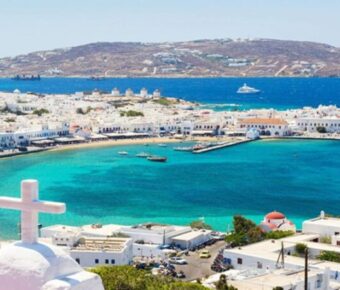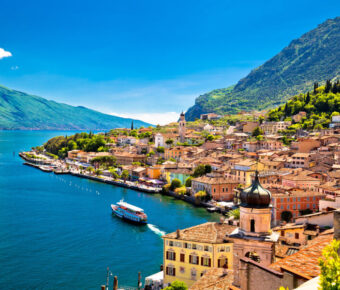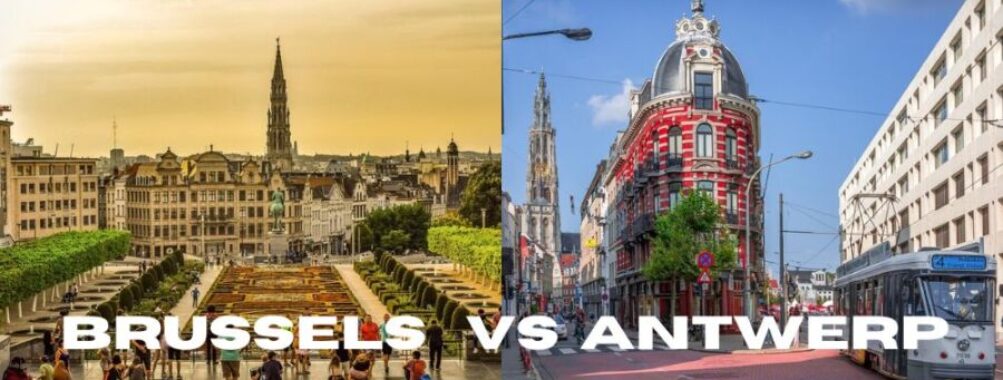
Brussels vs Antwerp: Which Belgian City Offers the Best Cultural Experience in 2025?
Belgium’s two largest cities offer different experiences for travelers seeking a taste of Belgian culture. Brussels serves as both the Belgian capital and the heart of the European Union, making it a hub of international politics and diverse influences. Antwerp shines as a vibrant port city known for its diamond trade, fashion scene, and rich artistic heritage.
Most visitors prefer Brussels for a first trip to Belgium due to its central location, grand architecture, and wider range of tourist attractions, while Antwerp appeals more to travelers seeking a less touristy atmosphere with strong local culture. The cities sit just 45 minutes apart by train, giving visitors the option to explore both during their stay.
The weather patterns remain similar between the two cities, with Brussels receiving slightly more rain throughout the year. Both destinations showcase stunning medieval architecture, though Brussels’ Grand Place tends to draw more acclaim than Antwerp’s historic center.
Contents
- Historical Significance and UNESCO Heritage
- Brussels’ Historic City Center
- Antwerp’s Diamond District and Historic Legacies
- Cultural Marvels and Museums
- Brussels’ Royal Museums of Fine Arts
- Antwerp’s MAS (Museum aan de Stroom)
- Architectural Highlights
- The Atomium and Art Nouveau of Brussels
- Antwerp’s Modern Edges and Historic Roots
- Gastronomic Delights and Culinary Scene
- Tasting Brussels’ Cuisine
- Antwerp’s Flavorful Offerings
- Public Transportation and Accessibility
- Brussels’ Comprehensive Travel Networks
- Navigating Antwerp with Ease
- Retail Therapy and Shopping Experiences
- Shopping in Brussels’ Quarters
- Antwerp’s Fashion Museums and Outlets
- Entertainment and Nightlife
- Brussels’ Lively Night Scene
- Antwerp’s Leisure and Entertainment
- Accommodation and Stay Options
- Where to Stay in Brussels
- Finding the Perfect Accommodation in Antwerp
- Frequently Asked Questions
- What are the key differences in the nightlife scene between Antwerp and Brussels?
- Which city should one opt for a day trip when visiting Belgium: Antwerp or Brussels?
- From an expert traveler’s perspective, which is the preferred city to use as a base while exploring Belgium?
- Considering unique attractions and cultural experiences, is Antwerp a destination worth including in a Belgian itinerary?
- How do Brussels and Antwerp compare in terms of historical and cultural offerings for tourists?
- Can you highlight the factors that might influence a decision between visiting Brussels or Antwerp?
- More Travel Guides
Historical Significance and UNESCO Heritage
Brussels and Antwerp both showcase Belgium’s rich cultural heritage through their preserved historic landmarks and internationally recognized sites. Each city tells unique stories through its architecture and cultural traditions that span many centuries.
Brussels’ Historic City Center
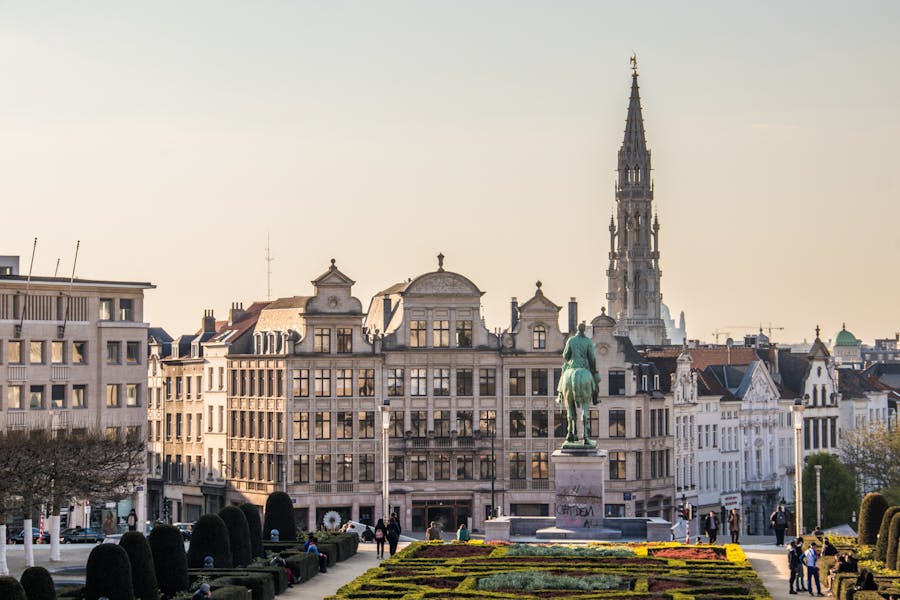
The Grand Place stands as Brussels’ crown jewel, earning UNESCO World Heritage status for its outstanding Gothic and Baroque architecture. This 15th-century square features ornate guild houses with detailed facades and the magnificent Town Hall that rises 315 feet into the sky.
The buildings around Grand Place showcase the city’s medieval roots as a major trading hub. Rich merchants and powerful guilds built elaborate structures to display their wealth and influence.
Visitors can spot intricate stone carvings, gold decorations, and dramatic spires throughout the square. The buildings light up each evening, creating a magical atmosphere that brings the historic architecture to life.
Antwerp’s Diamond District and Historic Legacies
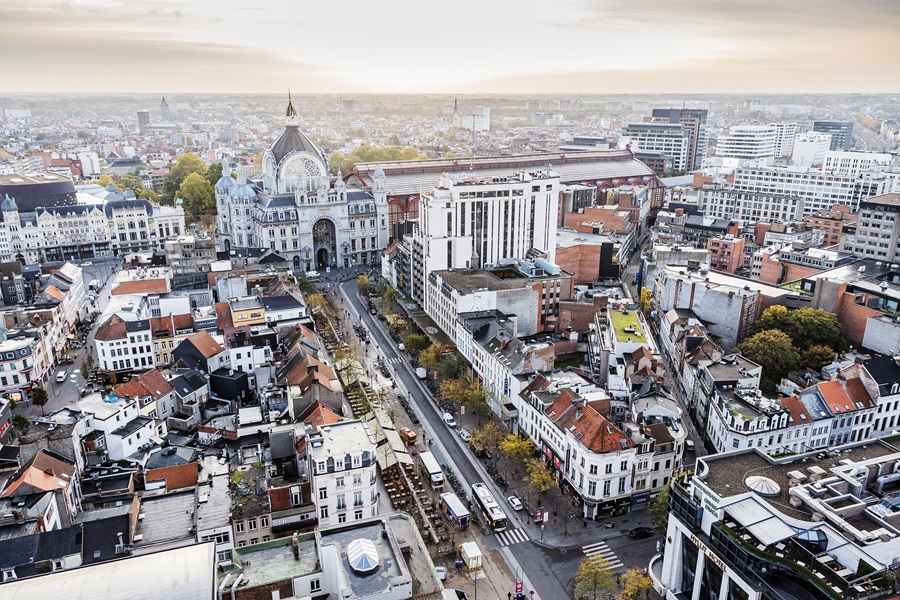
Antwerp’s Diamond District reflects 500+ years of gemstone trading history. The district processes over 80% of the world’s rough diamonds, continuing traditions established in the 15th century.
The Cathedral of Our Lady dominates Antwerp’s skyline as the largest Gothic church in the Low Countries. Its 123-meter spire towers over the city’s historic center, housing important artwork including Rubens’ famous altar paintings.
Antwerp’s old city walls and Grote Markt preserve medieval charm with their stepped gable houses and cobblestone streets. The restored historic warehouses along the river Scheldt remind visitors of the city’s golden age as Europe’s leading trade port.
Cultural Marvels and Museums
Belgium’s two largest cities house remarkable art collections and cultural institutions. Each city offers distinct artistic experiences, with Brussels highlighting Belgian surrealism and Antwerp celebrating maritime heritage through cutting-edge museum design.
Brussels’ Royal Museums of Fine Arts

The Royal Museums of Fine Arts span six museums in one massive complex. The Old Masters Museum displays works from the 15th to 18th centuries, with paintings by Flemish masters like Pieter Bruegel the Elder taking center stage.
The Magritte Museum, dedicated to Belgium’s famous surrealist painter René Magritte, showcases over 200 works. Visitors can explore the artist’s mind through his iconic bowler hat paintings and thought-provoking pieces.
Art Nouveau architecture adds extra charm to the museum experience. The Musical Instruments Museum (MIM) stands as a stunning example with its decorated facade and wrought-iron details.
Antwerp’s MAS (Museum aan de Stroom)
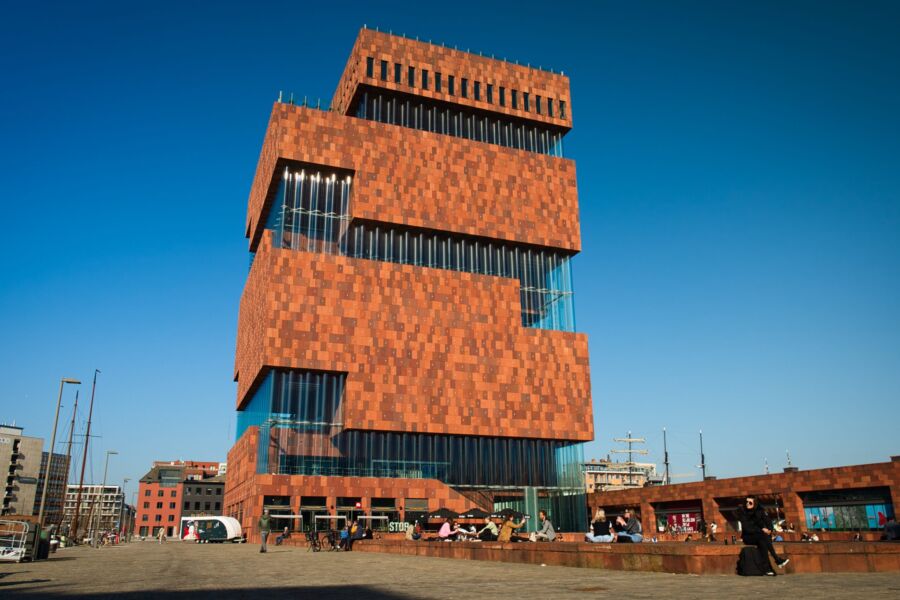
The MAS rises like a giant stack of red sandstone blocks along Antwerp’s harbor. Its unique design features spiral walkways and floor-to-ceiling windows offering panoramic city views.
Each floor tells different stories about Antwerp’s connection to the world through trade, art, and culture. The museum’s collection includes historical objects, contemporary art, and maritime artifacts.
The visible storage concept lets visitors peek into usually hidden museum operations. Glass walls reveal how artworks are preserved and stored when not on display.
The rooftop deck provides free access to breathtaking 360-degree views of the city and port. At night, the building lights up like a beacon along the Scheldt River.
Architectural Highlights
Brussels and Antwerp showcase distinct architectural styles that reflect their unique histories and cultural influences. Both cities blend modern designs with well-preserved historic buildings.
The Atomium and Art Nouveau of Brussels
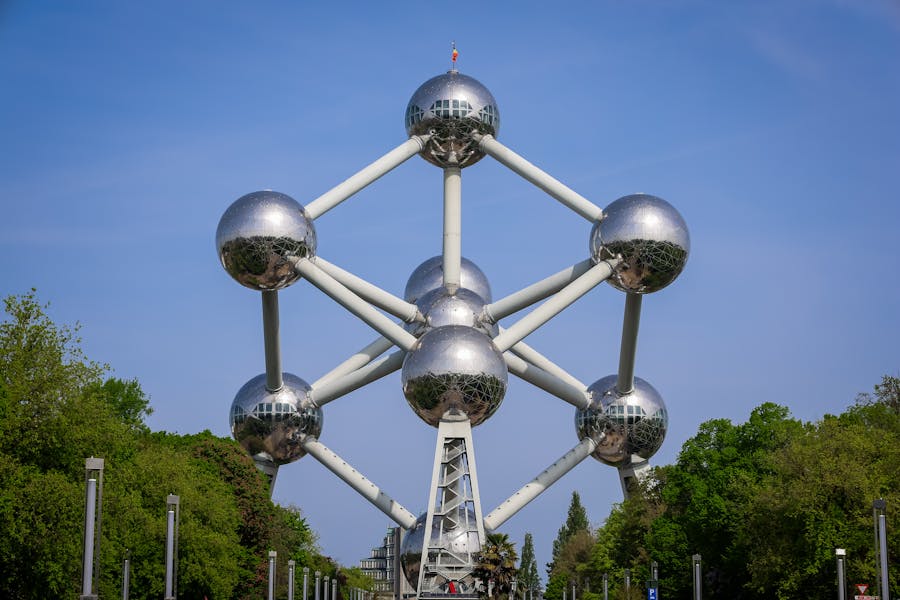
The Atomium stands as Brussels’ most eye-catching landmark. This massive steel structure, built for the 1958 World’s Fair, represents an iron crystal magnified 165 billion times. You can spot it from miles away, shining like a giant metal sculpture against the sky.
The city brims with stunning Art Nouveau buildings from the late 1800s. Victor Horta’s masterpieces dot the streets, featuring elegant curved lines and nature-inspired decorations. The Musical Instruments Museum shows off this style with its wrought-iron details and flowing designs.
Antwerp’s Modern Edges and Historic Roots
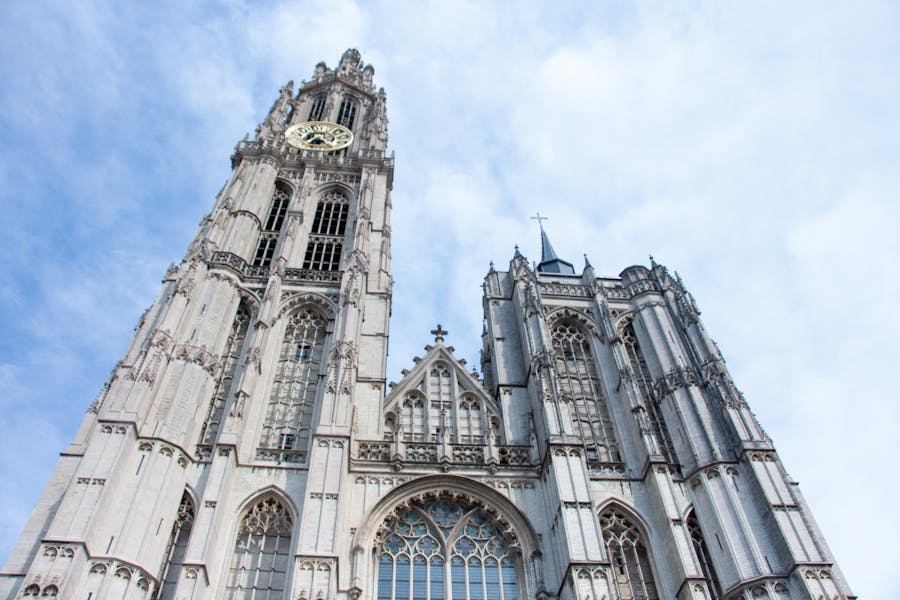
The Cathedral of Our Lady dominates Antwerp’s skyline with its Gothic spire reaching 123 meters high. Inside, Rubens’ famous paintings hang on the walls, making it both an architectural and artistic treasure.
The Zurenborg district amazes visitors with its mix of Art Nouveau and other late 19th-century styles. Streets like Cogels-Osylei display rows of uniquely decorated houses, each with its own character and charm.
The Port House stands as a modern marvel – a glass ship-like structure perched atop an old fire station. Its bold design reflects Antwerp’s role as Europe’s second-largest port while honoring its maritime history.
Gastronomic Delights and Culinary Scene
Belgian cuisine shines brightly in both cities, with each offering unique specialties and food experiences that reflect their distinct characters and cultural heritage. The food scenes blend traditional Belgian dishes with modern interpretations and international influences.
Tasting Brussels’ Cuisine
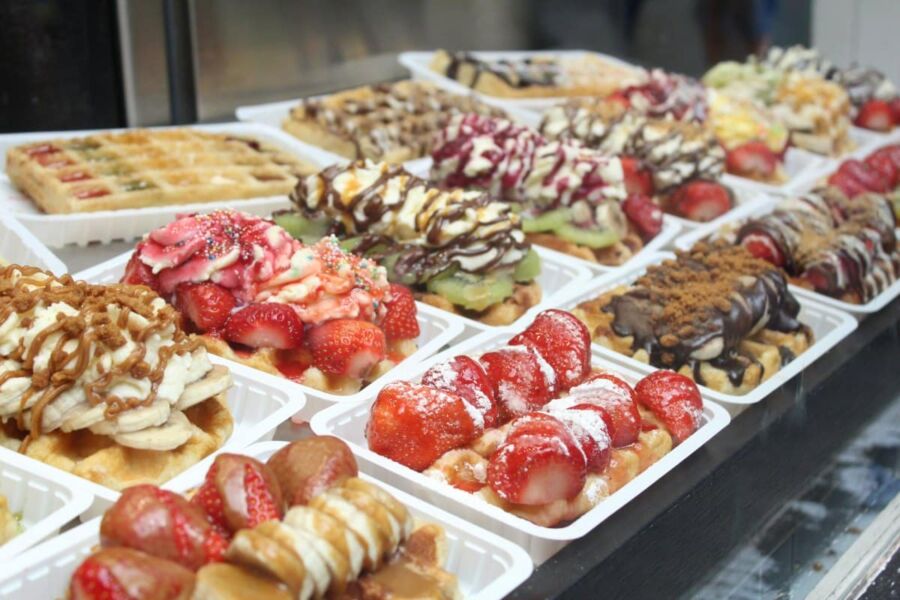
Brussels serves as Belgium’s culinary capital, mixing classic Belgian dishes with foods from around the world. The city’s streets burst with the sweet scent of fresh waffles – both Brussels-style rectangular ones and Liège-style round ones with pearl sugar.
Visitors can sample world-famous Belgian chocolates at renowned shops like Neuhaus and Godiva. Many small chocolatiers still make pralines by hand using traditional methods passed down through generations.
The city takes pride in its street food culture. Golden frites stands dot the streets, serving crispy fries in paper cones with dozens of sauce options. Local favorites include carbonade flamande (beef stew) and moules-frites (mussels and fries).
Antwerp’s Flavorful Offerings
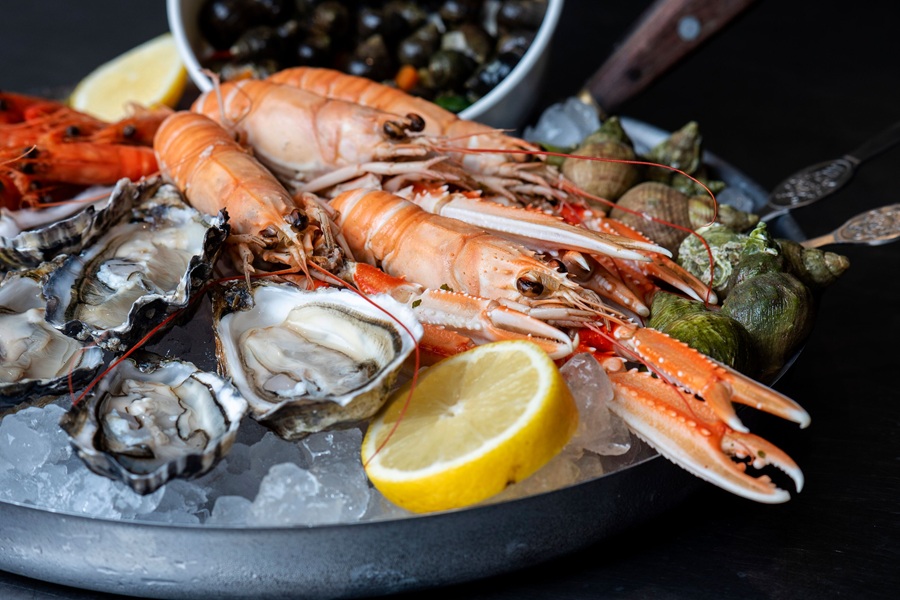
Antwerp puts its own spin on Belgian cuisine, with a food scene that mixes port city influences with local traditions. The Diamond District houses some of the city’s best-kept food secrets, including Jewish bakeries and diamond-district lunch spots.
Fresh seafood plays a big role thanks to Antwerp’s location. Local restaurants serve North Sea shrimp croquettes and fish soup that changes daily based on the morning’s catch.
The city claims some of Belgium’s finest chocolate shops. Master chocolatiers like The Chocolate Line create unique flavor combinations – think curry, wasabi, or black olive chocolate pralines.
Street food markets pop up across Antwerp’s neighborhoods. The most popular spots serve Belgian comfort foods like stoofvlees (meat stew) alongside creative food truck offerings.
Public Transportation and Accessibility
Both cities offer excellent public transit systems that make getting around simple and affordable. The networks include buses, trams, and trains that connect all major areas and attractions.
Brussels’ Comprehensive Travel Networks
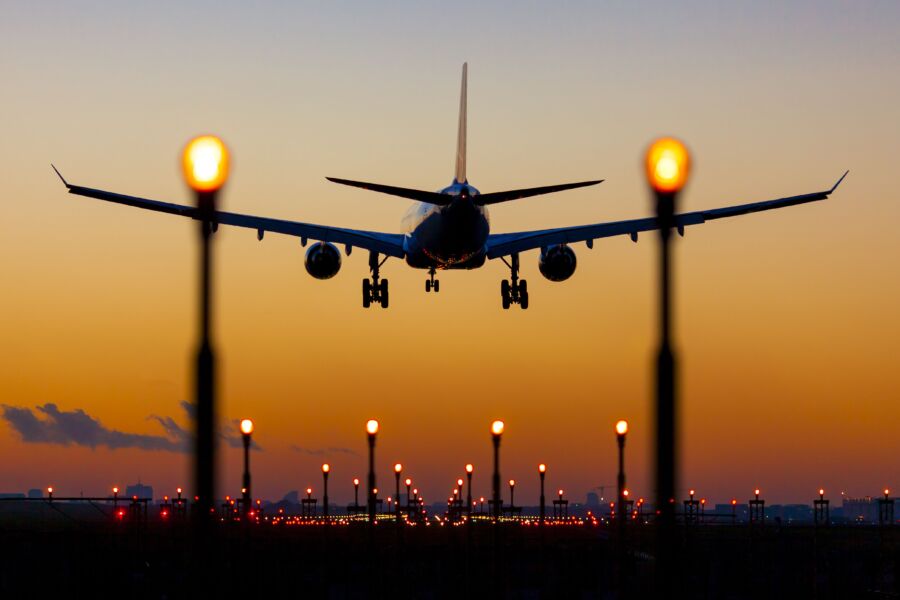
The city maintains an extensive metro system with 4 lines covering most tourist spots. A single ticket costs €2.10 and works across all transport types for one hour of travel time.
The STIB/MIVB network runs frequent buses and trams throughout Brussels. Day passes give unlimited rides for €7.50, making city exploration budget-friendly.
Brussels Airport links to the city center via direct trains every 10 minutes. The journey takes just 20 minutes to reach Brussels Central Station.
Many locals and visitors use Villo! public bikes to get around. Over 360 bike stations are spread across the city for easy pick-up and drop-off.
Antwerp Central Station serves as the main transport hub, with regular trains connecting to Brussels and other Belgian cities. The stunning architecture makes it worth visiting even if not taking a train.
The De Lijn tram and bus network covers the whole city. Single tickets cost €2.86 and are valid for one hour. Multi-day passes give better value for longer stays.
Antwerp’s compact city center means many attractions sit within walking distance. The pedestrian-friendly streets and wide sidewalks make exploring on foot pleasant.
The Velo bike share system provides a fun way to see the city. More than 300 stations offer bikes for rent with daily or weekly passes available.
Retail Therapy and Shopping Experiences
Brussels and Antwerp offer unique retail landscapes with distinct personalities. Brussels shines with its mix of luxury boutiques and vintage finds, while Antwerp stands proud as Belgium’s fashion capital with designer outlets and high-end shopping.
Shopping in Brussels’ Quarters
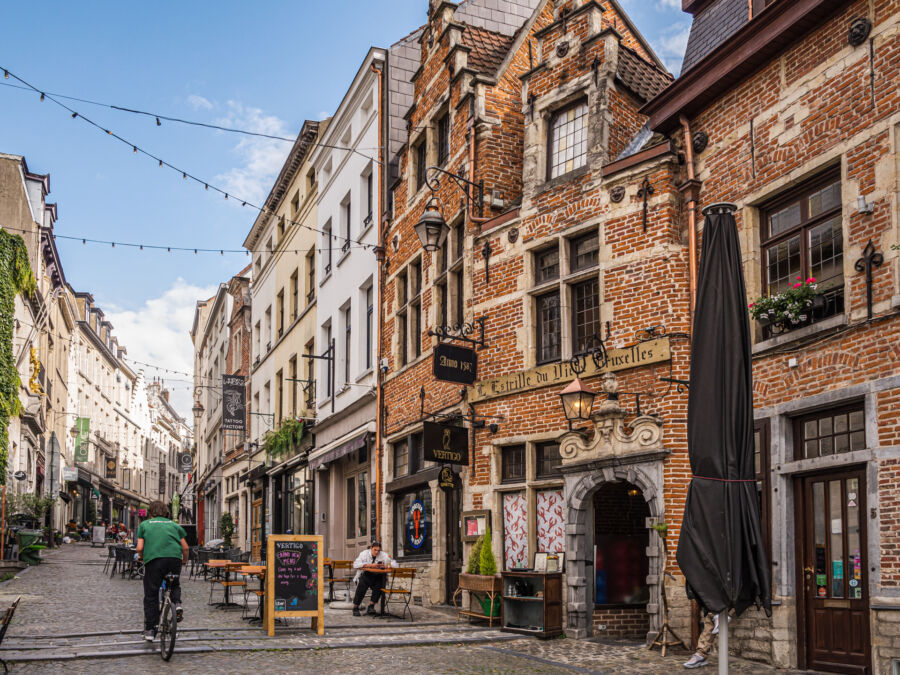
The Sablon district dazzles with its antique shops and art galleries. Small boutiques line the cobblestone streets, perfect for finding one-of-a-kind treasures.
Avenue Louise attracts fashion lovers with its high-end brands like Chanel and Louis Vuitton. The street buzzes with well-dressed shoppers ducking in and out of designer stores.
The Galeries Royales Saint-Hubert, built in 1847, houses elegant shops under its glass-roofed arcade. This stunning shopping gallery features Belgian chocolate makers, luxury accessories, and beautiful bookstores.
Antwerp’s Fashion Museums and Outlets
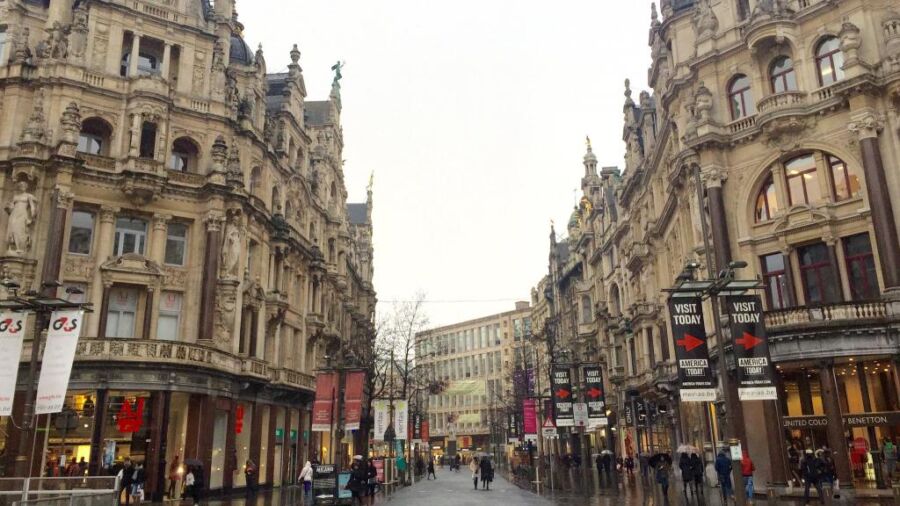
The MoMu Fashion Museum showcases Belgian design talent through rotating exhibitions. It tells the story of the famous Antwerp Six designers who put the city on the fashion map.
The diamond district sparkles with over 1,800 diamond traders and workshops. Visitors can watch craftsmen at work or shop for certified diamonds in the world’s diamond capital.
The Meir, Antwerp’s main shopping street, mixes historic architecture with modern retail. Belgian designers like Dries Van Noten and Ann Demeulemeester have flagship stores nearby.
The Stadsfeestzaal shopping center dazzles with its gold-leaf details and glass dome. This restored 1908 festival hall now houses 40 luxury stores.
Entertainment and Nightlife
Brussels and Antwerp both offer exciting after-dark scenes with distinct personalities. Each city serves up a unique mix of bars, clubs, and entertainment options that cater to different tastes and styles.
Brussels’ Lively Night Scene
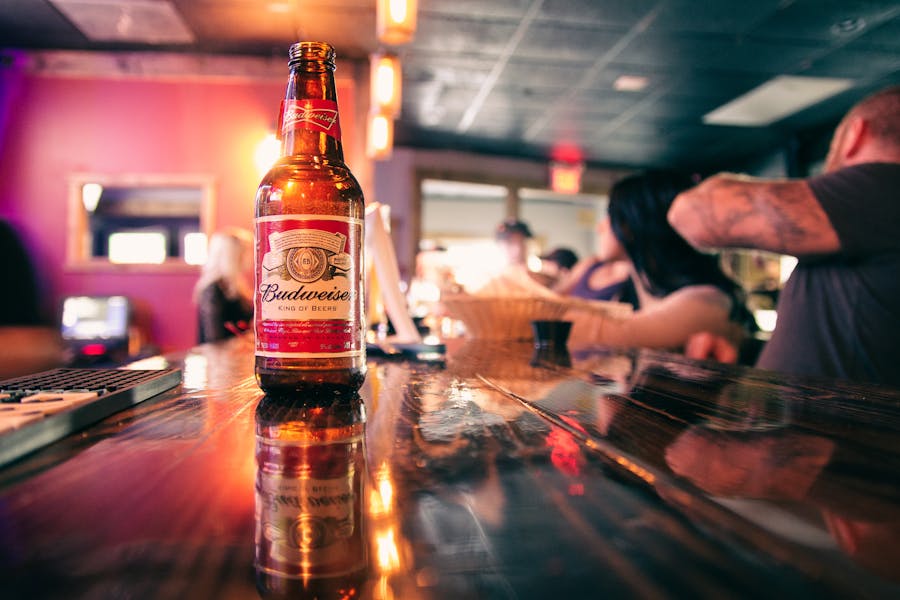
The Grand Place comes alive at night with cozy Belgian beer bars and upscale cocktail lounges. Local favorites cluster around Saint-Géry and Saint-Jacques, where vintage jazz clubs mix with modern dance venues.
Place Luxembourg buzzes Thursday nights when EU workers fill the terraces. The bars here pour Belgian craft beers and serve light snacks until late.
Delirium Café stands out with its world-record selection of over 2,000 beers. The multi-level venue attracts both tourists and locals who come for the extensive menu and lively atmosphere.
The Marolles district offers quirky wine bars and alternative music venues. Street performers and musicians often entertain crowds here on weekend evenings.
Antwerp’s Leisure and Entertainment
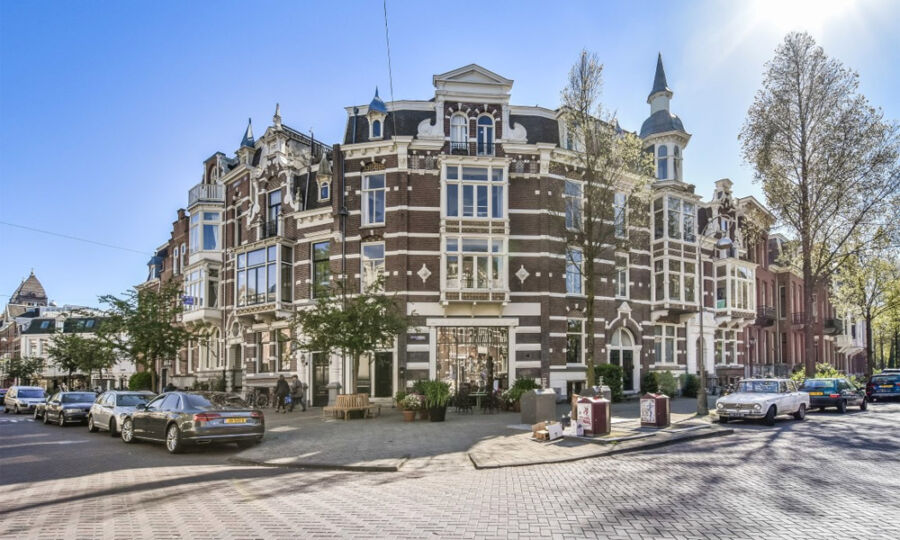
The Zuid district shines as Antwerp’s prime nightlife hub. Trendy cocktail bars and dance clubs line the streets around the Museum of Fine Arts. Young locals flock here for craft cocktails and electronic music.
The historic harbor area hosts unique entertainment venues. Converted warehouses now house live music spaces and art galleries that stay open late for special events.
De Coninckplein square pulses with energy from its mix of student bars and casual pubs. Many spots offer happy hour specials and stay open until sunrise on weekends.
The famous Belgian beer culture thrives in traditional brown cafés near the Cathedral. These historic pubs maintain their authentic charm while serving hundreds of local brews.
Accommodation and Stay Options
Both Brussels and Antwerp offer diverse lodging choices, from luxury hotels to budget-friendly spots. Each city has its own charm when it comes to places to stay.
Where to Stay in Brussels

The historic center near Grand Place holds many upscale hotels perfect for first-time visitors. The European Quarter attracts business travelers and offers modern hotels and accommodations.
Saint-Gery neighborhood gives travelers a taste of local life with boutique hotels and charming bed-and-breakfasts. Prices start around €100 per night for mid-range options.
Budget travelers can find hostels in the Saint-Josse area, with dorm beds starting at €25.
Most family-friendly hotels cluster around Brussels Park and the Royal Quarter. These areas offer quiet streets and easy access to attractions.
Finding the Perfect Accommodation in Antwerp
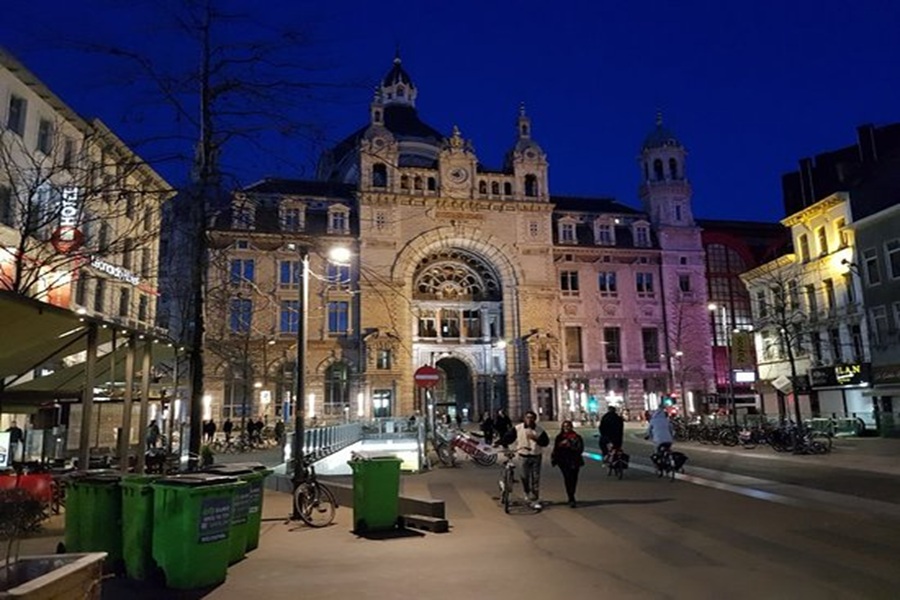
The Diamond District features high-end hotels with top-notch service. The historic center near Grote Markt mixes boutique hotels with cozy guesthouses.
Zuid district attracts creative types with its art-focused hotels and unique stays. Expect to pay around €90-150 per night for standard rooms.
Students and backpackers head to the University Quarter for affordable hostels. The area buzzes with young energy and budget-friendly food options.
Families often choose the quieter Zurenborg neighborhood. Its Art Nouveau buildings house comfortable hotels and rental apartments with more space to spread out.
Frequently Asked Questions
Brussels and Antwerp each bring distinct advantages for travelers seeking authentic Belgian experiences. These common questions address key differences in attractions, nightlife, accessibility, and cultural experiences between Belgium’s two major cities.
What are the key differences in the nightlife scene between Antwerp and Brussels?
Antwerp’s nightlife centers around the trendy Zuid district and the historic harbor area. The city attracts a younger crowd with its fashion-forward clubs and indie music venues.
Brussels offers a more diverse after-dark scene spanning multiple neighborhoods. The Saint-Géry area draws international crowds, while Place Luxembourg buzzes with EU professionals on weekday evenings.
Which city should one opt for a day trip when visiting Belgium: Antwerp or Brussels?
Antwerp works better for day trips due to its compact city center. Visitors can explore the Diamond District, Rubens House, and Cathedral of Our Lady within walking distance.
The train ride from Brussels to Antwerp takes just 30-40 minutes, making it ideal for quick visits.
From an expert traveler’s perspective, which is the preferred city to use as a base while exploring Belgium?
Brussels serves as the better base city thanks to its central location and transport links. The city’s main train station connects directly to Paris, Amsterdam, and London.
Antwerp works better for travelers focused on exploring northern Belgium and the Flanders region.
Considering unique attractions and cultural experiences, is Antwerp a destination worth including in a Belgian itinerary?
Antwerp stands out for its fashion scene and diamond trade heritage. The MAS Museum offers panoramic city views and tells the story of Antwerp’s maritime history.
The city’s mix of medieval architecture and modern design makes it unique among Belgian destinations.
How do Brussels and Antwerp compare in terms of historical and cultural offerings for tourists?
Brussels showcases grand architecture at Grand Place and houses world-class museums like the Royal Museums of Fine Arts.
Antwerp emphasizes its artistic legacy through Rubens’ works and the Royal Academy of Fine Arts. The city’s port history adds an extra cultural dimension.
Can you highlight the factors that might influence a decision between visiting Brussels or Antwerp?
Budget travelers often prefer Antwerp for its lower accommodation costs and food prices. The city feels more local and less touristy than Brussels.
Brussels attracts visitors interested in EU institutions and international politics. Its restaurant scene offers more variety, from Belgian classics to global cuisine.
The cities’ different languages might affect choice – Brussels is mainly French-speaking, while Antwerp is Dutch-speaking with good English widely used.
